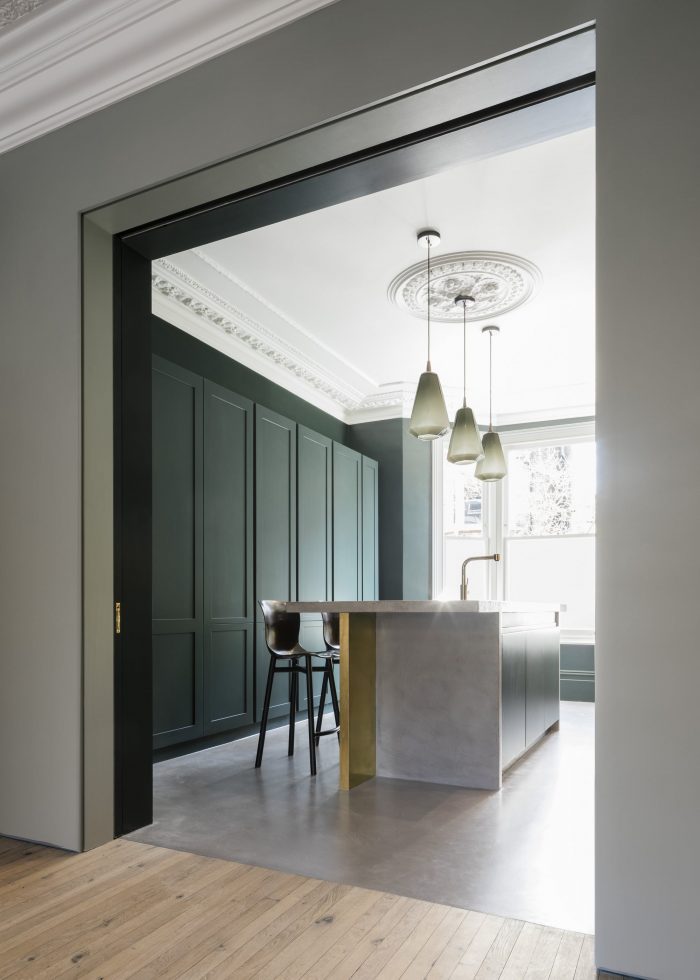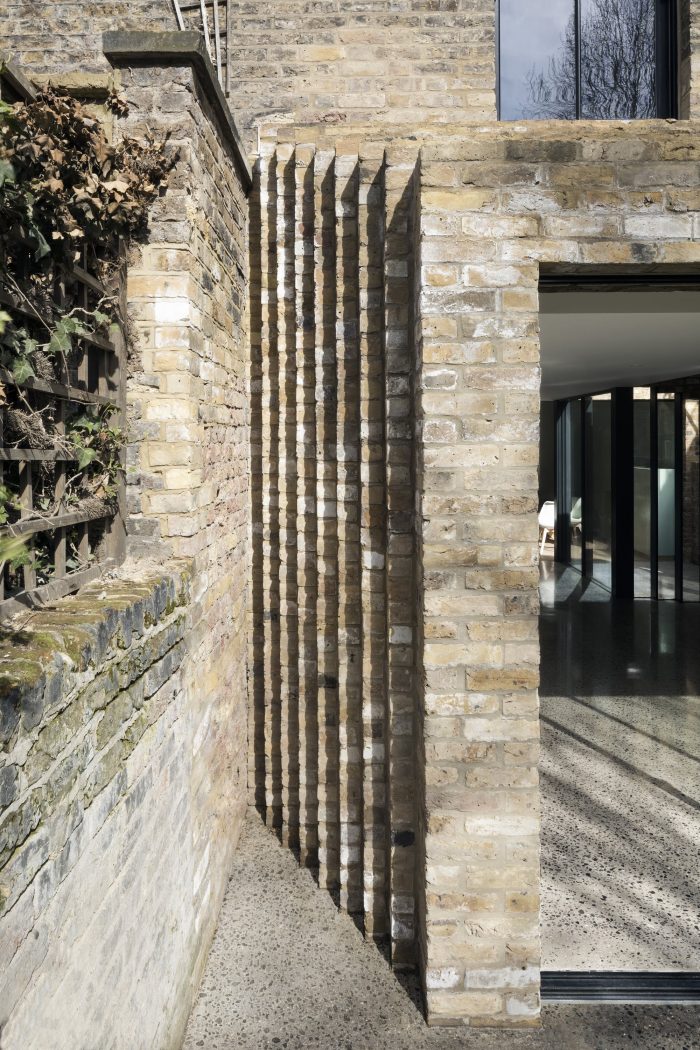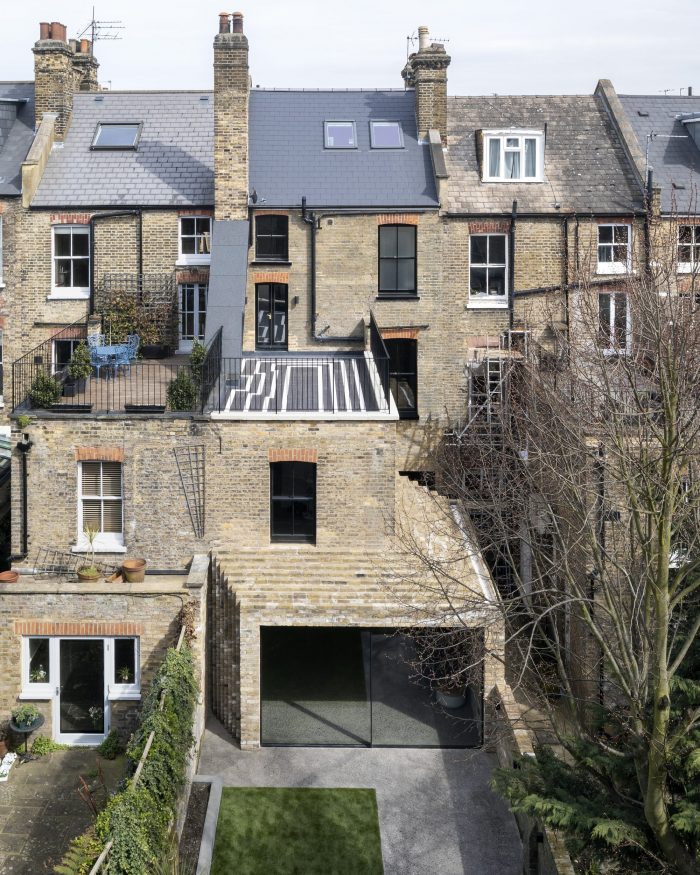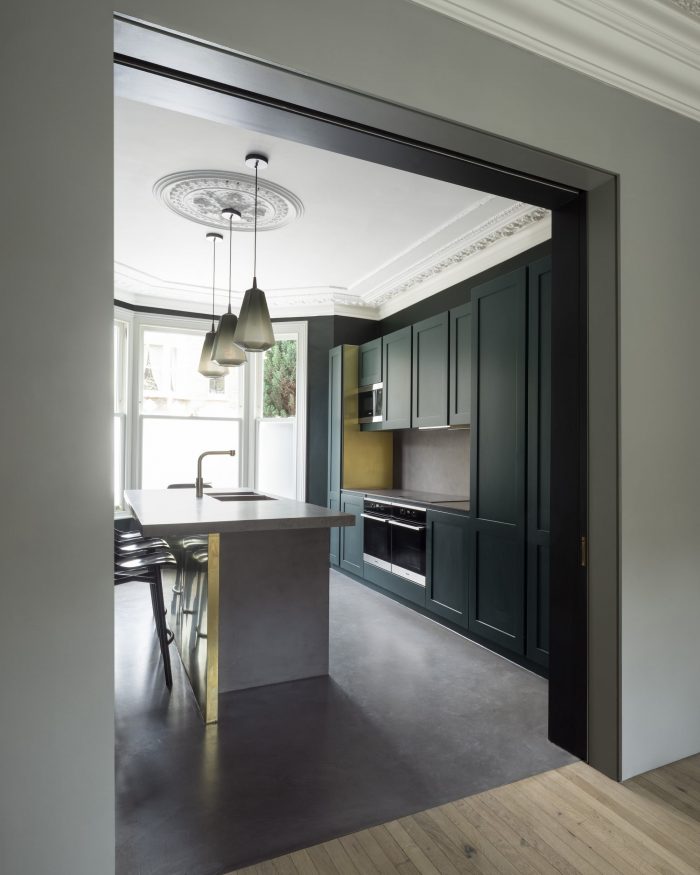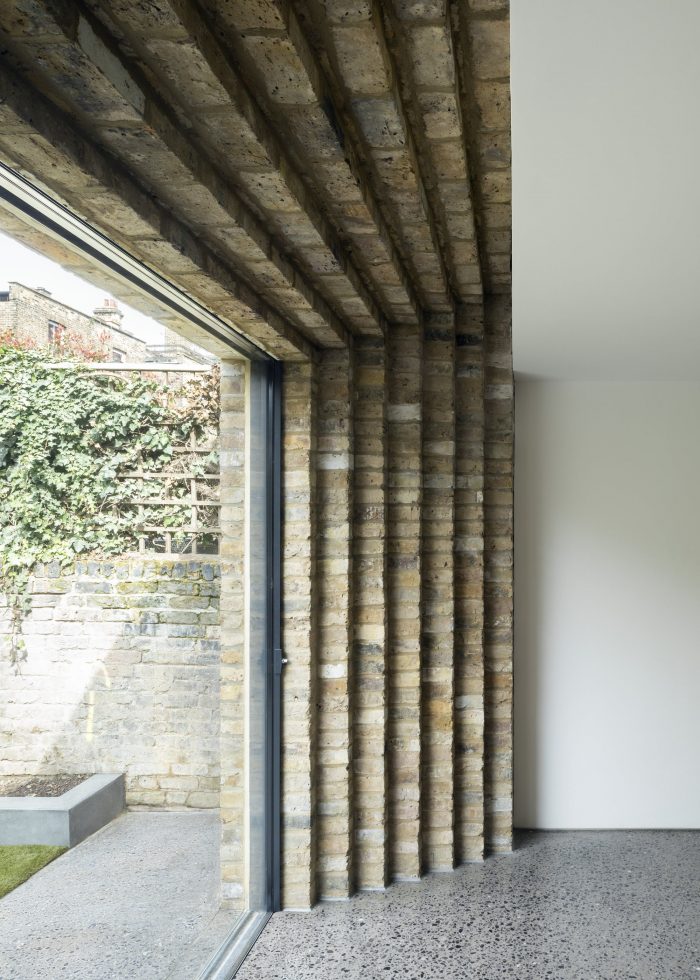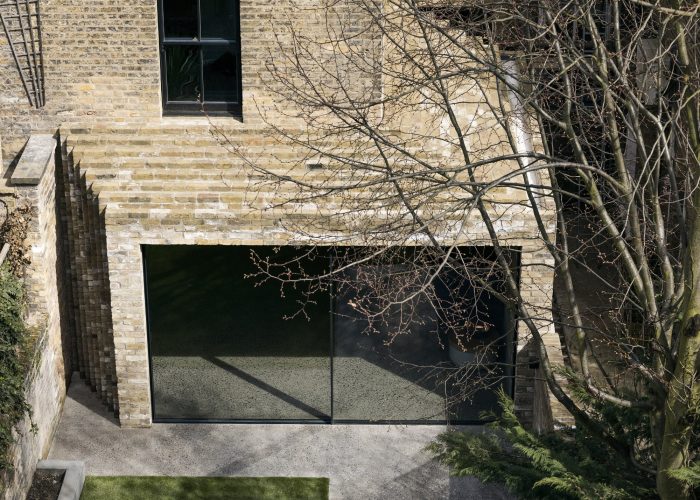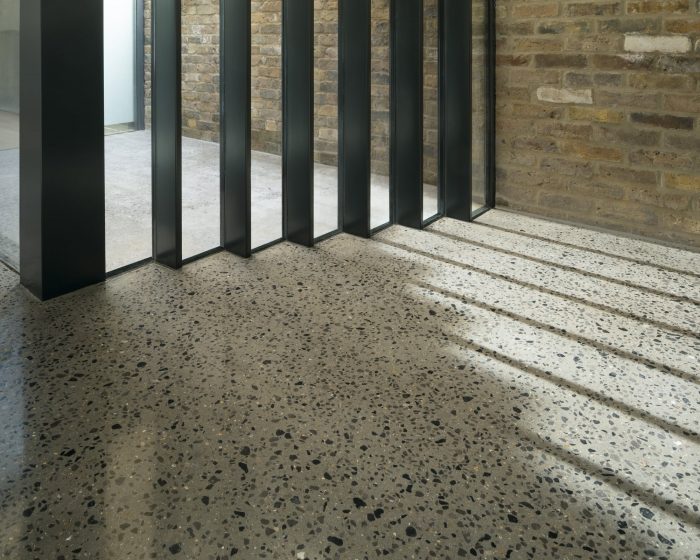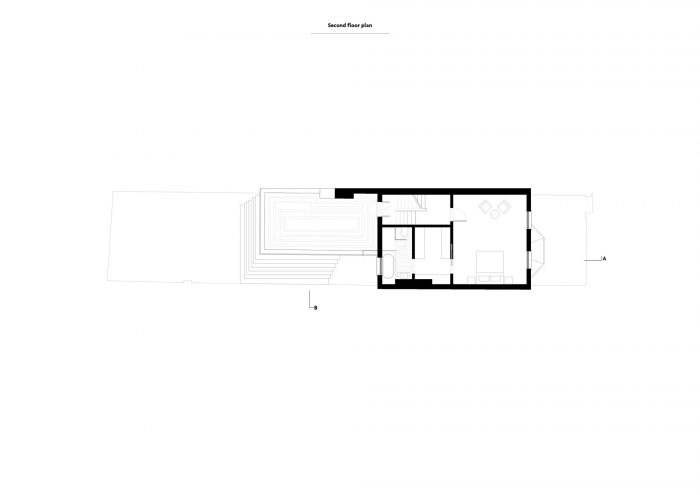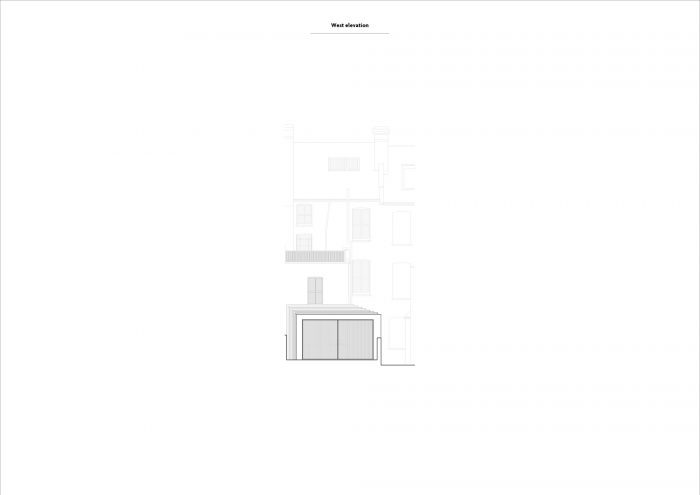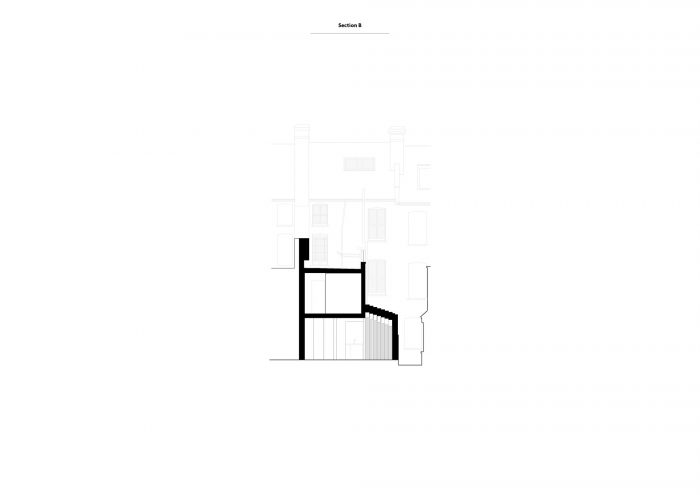这座创新的建筑没有采用人们期待的玻璃结构,而是重新想象了传统的排屋扩建,颂扬和提升了简陋的砖块。砖头作为可堆叠模块的固有潜力被最大限度地利用,以创造一种更有雕塑感的材料表达。
Instead of the more expected glass structure, this innovative addition reimagines the conventional terraced-house extension, celebrating and elevating the humble brick. The brick’s inherent potential as a stackable module is maximized to create a more sculptural expression of the material.
使用从房屋结构中回收的砖块,扩建部分利用了光照图的权利,创造了一个交错的、挤压的形式,似乎与现有结构融为一体。这种由砖块产生的有节奏的阶梯在整个室内得到了呼应,并被整合到了平面和剖面中。从上面的阳台上看,这种形式创造了一个引人注目的轮廓–这在更直接的附加建筑中是罕见的。
Using bricks reclaimed from the fabric of the house, the extension exploits the rights of a light diagram to create a staggered, extruded form that appears to melt away from the existing structure. This rhythmic stepping generated by the brick is echoed throughout the interior and is integrated into both the plan and section. Viewed from the terrace above, the form creates a striking silhouette – a feature rare in more straightforward additions.
在室内,家庭环境通过深思熟虑的空间排序而变得生动起来–将宽阔的底层转化为一个通过精心设计的环境的旅程。标准的布局已经被翻转,厨房在房子的前面占据了新的位置–这是一个经常被低估和遗忘的空间。在这里,房子的原始特征被保留下来,并通过深色和材料色调加以强调。继续往前走,空间由深到浅依次展开–强化了新增空间的明亮、宽阔的感觉。
Inside, the domestic setting is dramatized by a considered sequencing of spaces – transforming the expansive ground floor into a journey through carefully designed ambiances. The standard layout has been flipped, with the kitchen taking its new place at the front of the house – an often underused, forgotten space. Here, the original features of the house are retained, emphasized by dark colors and material tones. Moving onward, the spaces unfold in a sequence from dark to light – intensifying the bright, voluminous feel of the addition.
在中心位置,餐厅的标志是地板处理的变化:带有对齐接缝的窄木板在厨房的光滑混凝土和扩建部分的粗粒混凝土之间过渡。一个采光井确保了整个计划的深度是明亮的,并在室内提供了一个停顿的时刻。在这里,当切面玻璃与阶梯式砖块相遇时,概念的几何形状被强调了出来。
In the center, the dining room is marked by a change in floor treatment: narrow timber planks with aligned seams transition between the smooth concrete of the kitchen and the roughly-grained concrete of the extension. A light-well ensures the full depth of the plan is bright and provides a moment of pause within the interior. Here, where the faceted glass meets stepped brick, the geometry of the concept is accentuated.
通过与结构工程师的紧密合作,在扩建部分创造了一个完全无柱的空间,使用激光切割的双向梯形梁来支撑第一层。扩建部分的结构从一开始就融入了设计中–携手合作,创造了一个沉入扩建部分的第一层的外观。砖块从里到外都裸露在外,在尊重现有房屋的同时,明显脱离了历史建筑的传统语言。
Working closely with the structural engineers, an entirely column-free space has been created in the extension, using laser-cut, double-direction stepped beams to support the first floor. The structure of the addition is integrated into the design from the start – working hand-in-hand to create the appearance of a first floor that is sunken into the extension. The brick left exposed inside and out, is celebrated in a way that respects the existing house while clearly departing from the traditional language of the historic architecture.
Architects: Bureau de Change Architects
Area : 260 m²
Year : 2018
Photographs :Ben Blossom
Manufacturers : CompassGlass, Flooredgenius, TheConcreteFlooring, TuttoParquet
Contractor : Argyll Building Services
Engineer : NOUS
Extension : 40 sqm
City : London
Country : United Kingdom




